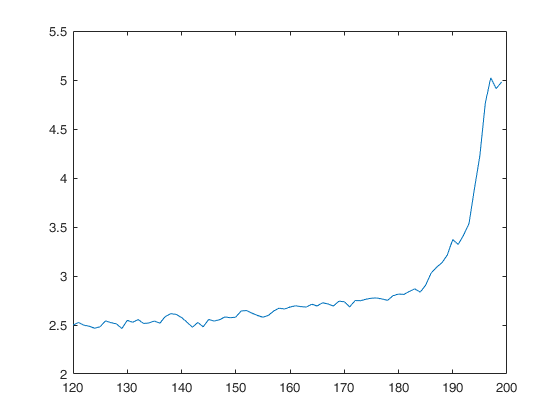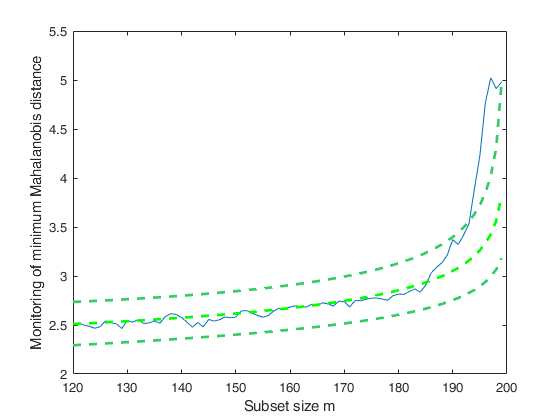n x v data matrix; n observations and v variables. Rows of
Y represent observations, and columns represent variables.
Missing values (NaN's) and infinite values (Inf's) are
allowed, since observations (rows) with missing or infinite
values will automatically be excluded from the
computations.
Data Types: single|double
List of units forming the initial subset.
If bsb=0 (default) then the procedure starts with p units randomly
chosen else if bsb is not 0 the search will start with
m0=length(bsb)
Data Types: single | double
Specify optional comma-separated pairs of Name,Value arguments.
Name is the argument name and Value
is the corresponding value. Name must appear
inside single quotes (' ').
You can specify several name and value pair arguments in any order as
Name1,Value1,...,NameN,ValueN.
Example:
'init',50
, 'msg',0
, 'nocheck',false
, 'plots',0
It specifies for
which steps of the fwd search it
is necessary to save the units forming subsets. If bsbsteps
is 0 we store the units forming subset in all steps. The
default is store the units forming subset in all steps if
n<=5000, else to store the units forming subset at steps
init and steps which are multiple of 100. For example, as
default, if n=7530 and init=6,
units forming subset are stored for
m=init, 100, 200, ..., 7500.
Example: 'bsbsteps',[100 200] stores the unis forming
subset in steps 100 and 200.
Data Types: double
Note that if bsb is supplied,
init>=length(bsb). If init is not specified it will
be set equal to floor(n*0.6).
Example: 'init',50
Data Types: double
If msg==1 (default) messages are displyed on the screen
else no message is displayed on the screen.
Example: 'msg',0
Data Types: double
If nocheck is equal to true no check is
performed on matrix Y. As default nocheck=false.
Example: 'nocheck',false
Data Types: logical
If plots=1, a plot of the monitoring of minMD among
the units not belonging to the subset is produced on the
screen with 1% 50% and 99% confidence bands
else (default) no plot is produced.
Example: 'plots',0
Data Types: double


 Minimum Mahalanobis distance.
Minimum Mahalanobis distance.
